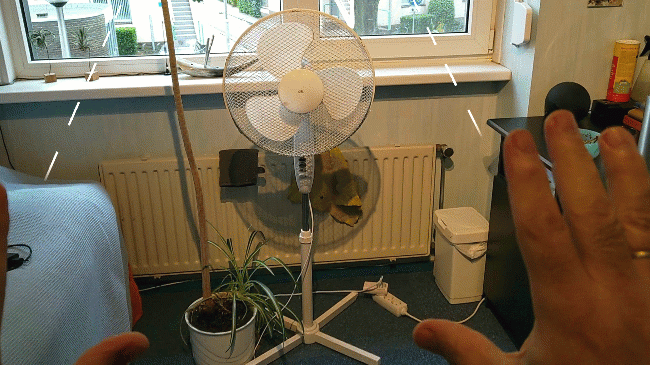Getting raw air taps and their positions with MRTK3
Over the last few months, I sometimes feel like I am Microsoft’s one-man Mixed Reality Q&A department, as I get lots of questions for tips, samples, and guidance. Apparently, many students and scientists are trying to get to grips with Mixed Reality. I try to answer them all, but sometimes it takes a while, as I attempt to answer them in order of appearance - and I also have a day job as an MR developer. Anyway, this week a developer asked me on GitHub how you could not only get a raw air tap in MRTK3, but also how you could get the tap position.
So I took a look at the repo from my blog post about this from June 2022 - that was still on some old MRTK3 Pre-release - and first updated it. Then I added the requested functionality. The way to do it turns out to be very simple. First, you have to get a reference to a hands aggregator subsystem:
handsAggregatorSubsystem =
XRSubsystemHelpers.GetFirstRunningSubsystem<IHandsAggregatorSubsystem>();
And then you get the actual pinch position like this:
private Vector3 GetPinchPosition(ArticulatedHandController handController)
{
return handsAggregatorSubsystem.TryGetPinchingPoint(handController.HandNode,
out var jointPose)
? jointPose.Position
: Vector3.zero;
}
The only piece of the puzzle you then need is finding the ArticulatedHandController objects for left and right hand, which you can do using my updated MRTK3ConfigurationFindingService.
All things combined, you can use it like this:
findingService =
ServiceManager.Instance.GetService<IMRTK3ConfigurationFindingService>();
findingService.LeftHandStatusTriggered.AddListener(t=>
{
leftHand.SetActive(t);
if (t)
{
textMesh.text = $"Left hand position: {GetPinchPosition(findingService.LeftHand)}";
}
});
findingService.RightHandStatusTriggered.AddListener(t=>
{
rightHand.SetActive(t);
if (t)
{
textMesh.text = $"Right hand position: {GetPinchPosition(findingService.RightHand)}";
}
});
It still works like before, on HoloLens 2 and Quest, but it now also shows the position on which you actually click, and with what hand, in text.

You can find the updated code and new functions in this repo, branch crossplatairtap-position

 MVP Profile
MVP Profile
 Try my app HoloATC!
Try my app HoloATC!  HoloLens 2
HoloLens 2
 Magic Leap 2
Magic Leap 2
 Quest 2/Pro
Quest 2/Pro
 Android phones
Android phones
 Try my app Walk the World!
Try my app Walk the World!  Buy me a drink ;)
Buy me a drink ;)
 Mastodon
Mastodon
 Discord: LocalJoost#3562
Discord: LocalJoost#3562
 Augmedit (employer)
Augmedit (employer)